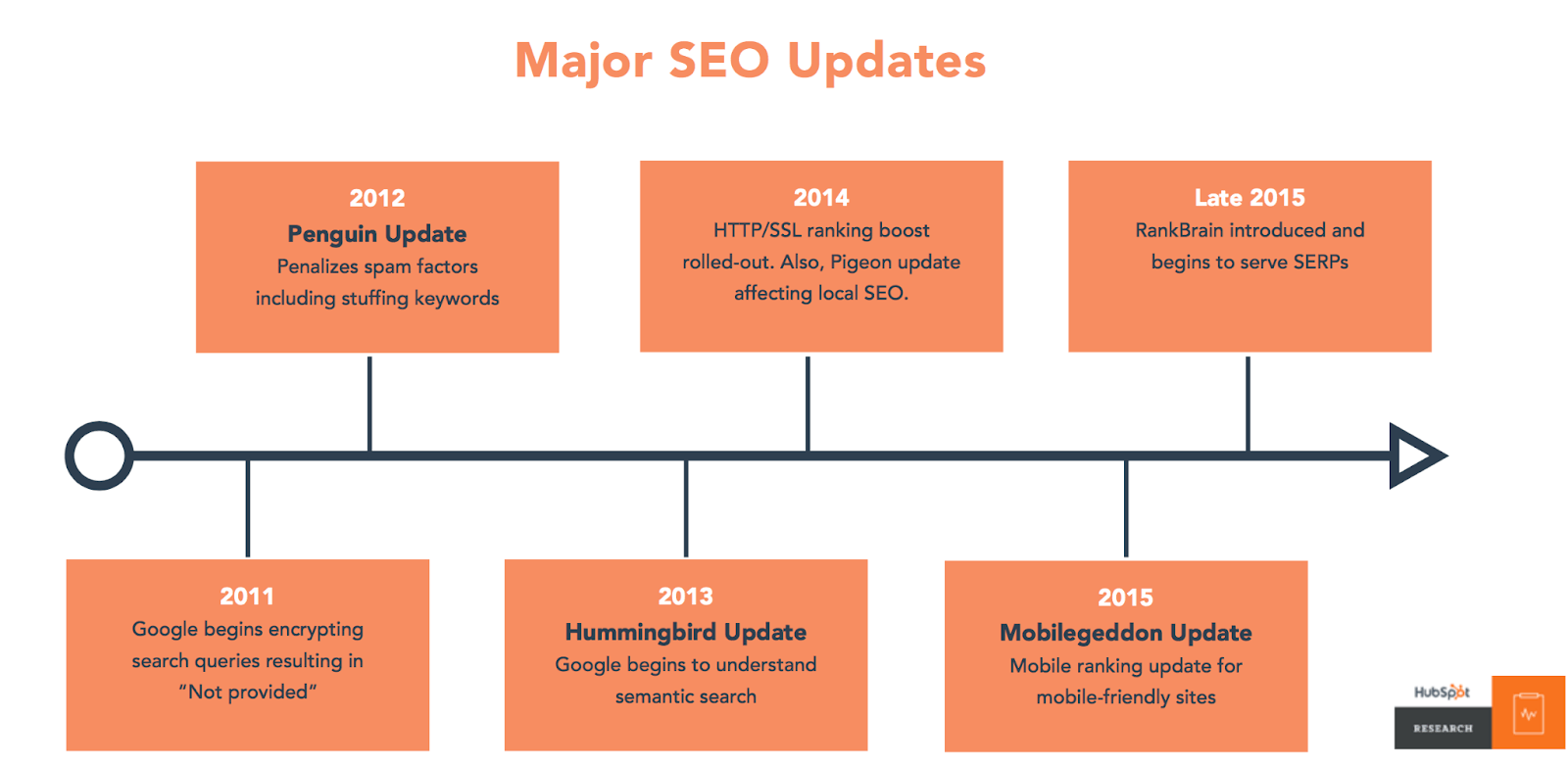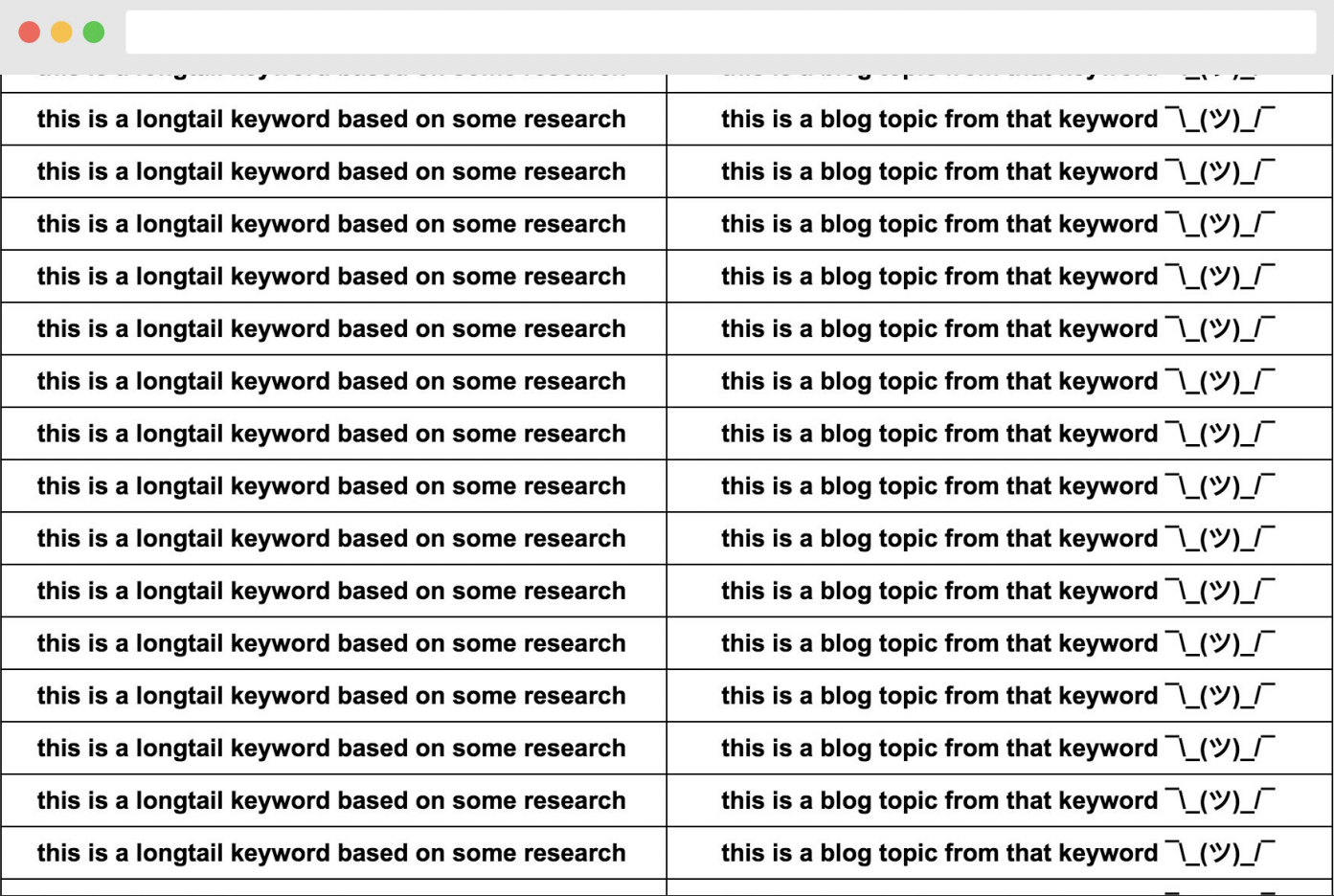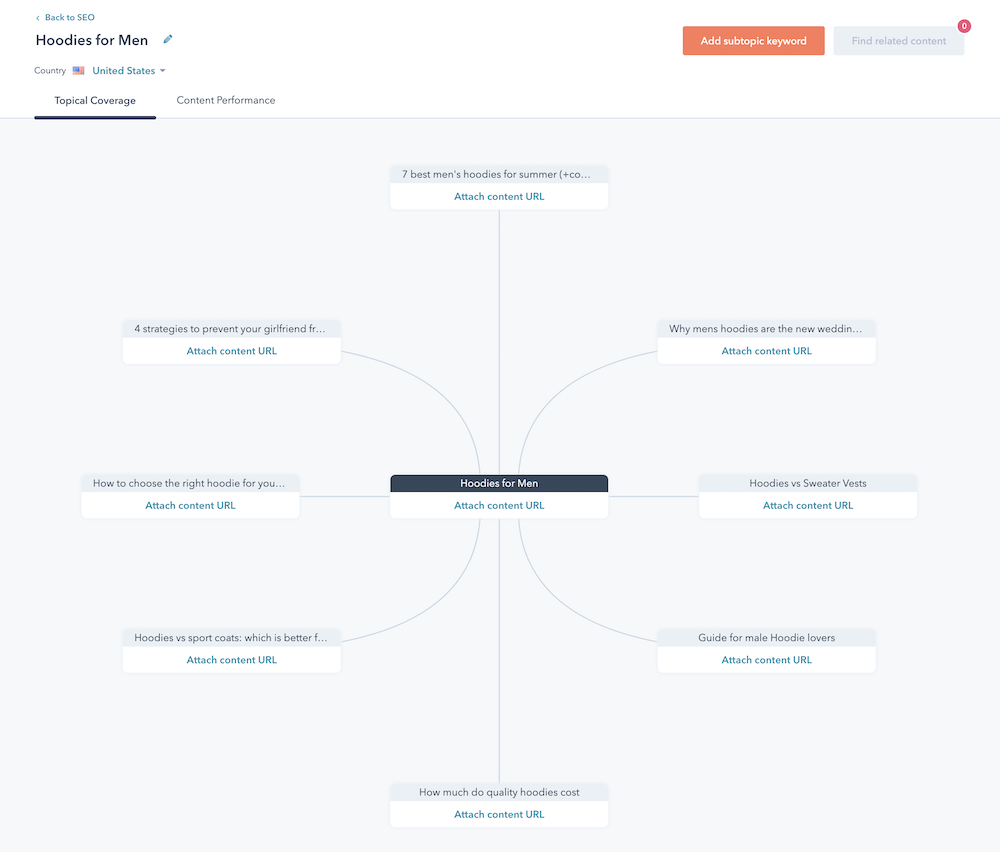6 min read
What is a topic cluster? (definition + examples)
 George B. Thomas
Nov 10, 2022 12:12:57 PM
George B. Thomas
Nov 10, 2022 12:12:57 PM
Rather listen to this post?
In an SEO content strategy, a topic cluster is a network of interconnected pieces of content – blogs, podcasts, videos, you name it! – that all relate to the same broad central topic like, "technical recruiting" or "video for sales." At the center of a topic cluster lives a content pillar, which is an ultimate guide to the central topic you've chosen.
OK, that was a lot of jargon, so what the heck does all of that mean? And can content marketers no longer pick a bunch of random keywords to create an editorial calendar anymore?
We're going to answer those questions, and others, in this article. A lot has changed in the last 10 years, so y'all ... buckle up, it's time to go back to content marketing school!
How search engines have changed how they rank content
To understand what topic clusters are and why they are so important to understand if you're creating content to drive traffic, leads, and sales for your business, we need to take a step back and look at the big picture.
The key to your success with topic clusters (and why they are a must) starts with understanding how search engines like Google and yes, even Bing, have evolved their ranking algorithms in the past decade or so.
🔎 Related: The last SEO content strategy guide you'll ever need
As consumers, it's easy for us to forget that Google, Bing, and DuckDuckGo aren't a service, they're a product.
They have customers, just like we do – anyone who fires up their search engine to find an answer or a solution online. So, just like you and me with our own businesses, those search engines are also working tirelessly each and every day to improve the quality and relevancy of the search results they deliver through their products.
Looking at Google as an example, they've implemented sweeping changes in their algorithm over the past 10+ years:

Image credit: HubSpot
In addition to introducing updates that target folks trying to game the system with nefarious tactics like keyword stuffing to increase rankings, Google has integrated artificial intelligence and machine learning into their algorithms.
Why does this matter? Those new super-charged little web-crawling robots are not only interested in the content you publish, they now want you to make it abundantly clear to them what your website is about. For example, this website you're on right now? I want our Google overlords to know I want to own HubSpot education topics, SEO content strategy, and more.
What these changes mean for your SEO content strategy
OK, the first step in fixing what's broken is first admitting you have a problem. How many of you right now are still creating content strategies that look something like this?

If this is you, don't stress – you're not alone! But let's talk about how writing up a bunch of hundreds of disorganized blog articles undermines your ability to have your content rank well in search.
When you take this approach, you make it virtually impossible for search engines like Google to tell how everything is connected. More than that, search engines will struggle to tell what big categories you’re trying to own as your areas of expertise.
🔎 Related: How to write a blog post outline (tips + examples)
As a result, our confused Google overlords will not send you the website traffic you want. All it knows is that you’re creating a bunch of content about a bunch of different stuff, but it doesn’t understand how it all connects.
Thankfully, topic clusters are here to save the day!
The thing you need to keep in mind about topic clusters is that while it's a different way of developing your content strategies, all a topic cluster approach does is bring more order and organization to the content you're already creating, like blogs and videos and podcasts!
The only new type of content you'll need to learn how to create is a content pillar page. (That's an article for another day, but if you're interested in learning more about what a pillar page is, check out my SEO content strategy guide, which has a whole section devoted to pillar pages – in fact, the guide is a pillar page itself!)
Let's take a look at an example, so you can get an idea of what a topic cluster is and how you can apply it to your business:

Here's an example of the topic cluster of my dreams (built using the HubSpot SEO tool) ... and it's entirely dedicated to the broad topic of HOODIES FOR MEN.
🔎 Related: HubSpot contacts mastery is how you maximize HubSpot ROI
At the center of our topic cluster will live our pillar, an Ultimate Hoodies for Men Guide. Around that topic cluster pillar there are supporting SUBTOPICS – pieces of related content that tie back to our main topic:
- 4 strategies to prevent your girlfriend from stealing your hoodie
- How to choose the right men's hoodie for your style
- Hoodies vs. sport coats: Which is better for work?
- How much do quality men's hoodies cost?
- Gift guide for male hoodie lovers (+ holiday tips)
- Why hoodies for men are the new wedding tuxedo
- 7 best men's hoodies for summer (+ cooling tips)
- Hoodies vs. sweater vests: a head-to-head matchup
Of course, your topic clusters will look much different than this example. Unless you happen to be in the hoodies for men niche; in which case, I'd love to talk to you.😉
Choosing your topic cluster topics
If you're like most business owners and marketing leaders I work with, choosing the right topic cluster topics can feel overwhelming – there are so many freaking options out there, right?

In those instances, my advice is always the same. First, don't panic!
Second, stay laser-focused on choosing the topic cluster topics that relate directly to the products and services you offer. Then prioritize creating those that serve the areas of your business that need it most. For example, if you offer website design services to businesses and you’re struggling to drive revenue for that service, you may want to focus on a keyword around “website redesign.”
You’ll also want to validate that those topics make sense from a search volume perspective with tools like Semrush and AnswerThePublic. You don’t want to go too specific with topic cluster keywords, though.
The secret to selecting the "sweet spot" keyword for your topic cluster subject is to keep it big and broad, with a hefty chunk of website traffic to back it up. (But not too broad! If a topic has too much volume – e.g., hundreds of thousands of searches – you need to narrow the scope of your topic.)
This is much different from how you’d go about selecting a keyword for a blog topic, which you want to be more specific.
For example, “website redesign” is an ideal topic cluster central keyword, whereas HubSpot vs. WordPress is MUCH more specific (with lower search volume), making it an ideal SUBTOPIC keyword that’s related to the topic of website redesign.
Why topic clusters rock the party that rocks the body
Is all of this work to entirely reimagine how you develop and execute your content strategies absolutely necessary? The answer to that is simple – absolutely yes.
Here's why:
- Your website content will be much more organized, making it easier for search engines to understand your content and what it's about. Not only that, you'll feel more organized and purposeful in your approach to content. You'll also reduce the number of times you waste effort creating content that isn't aligned with your overall goals.
- Because of this, you'll increase your site visibility with search engines. The easier you make it for them to understand what your website is about at a high level, instead of creating thousands of disconnected content pieces, the better you'll rank in search results.
- You'll make creating content strategies much, much easier for yourself. You'll only be focused on creating content that is fully aligned with your business. You'll guarantee that when you drill into a big topic (e.g., hoodies for men!), you'll exhaust every angle, meaning you'll do a better job of answering the questions all those humans you're looking to attract may have about what you do or sell.
Seriously, with a topic cluster approach to content, everyone wins – especially you. Your content will rank better, your content strategies will make more sense, and you'll see better results in the long run.
With topic clusters, you must remember this one thing
Topic clusters are incredibly powerful for businesses looking to exponentially increase qualified, organic traffic. However, there is one mistake I see well-meaning marketers and teams make over and over again that is so insidious, I can't let y'all go without talking about it.
⚠️ Register now: SEO content strategy masterclass
Let's say you map out a totally baller content strategy built around multiple topic clusters that are directly tied to what you do or sell. Then you go about your business creating all of that content – you write all of your content pillars and then create all of the supporting subtopic content that fills out the rest of your topic cluster.
... but then you botch the linking strategy. 😳
You either forget to link them together at all, or you only link out to all of your subtopics from your content pillar, or you only link back to your pillar from each of your articles. If you do this, you won't get results. Instead, you must link everything to each other in both directions. Every subtopic should be linked somewhere in your pillar guide. And every subtopic blog article, podcast, or video must link back to the pillar.
Whew, we just covered a lot!
So, if you've made it here, I salute you. But you might also be wondering, "How the heck do I get started?"
I encourage you to start small by asking yourself the following questions:
- What are the big topics we want to own in our space? You know, those topics where you want to be thought of as the #1 expert or thought leader by your ideal buyers.
- How much content have you already created about those topics? If you've been creating content for any length of time, I'd wager you've already got a lot of subtopics ready to be connected in a topic cluster.
- What parts of the business need the most help first? This will help you prioritize which topic clusters you work on first. Remember, your business objectives should dictate the priority of your content. If you're unclear on which of your sales pipelines needs the most help, ask your sales team!
From there, you can start putting together your new and improved content strategy roadmap! The kind search engines and the humans you serve will absolutely love.




